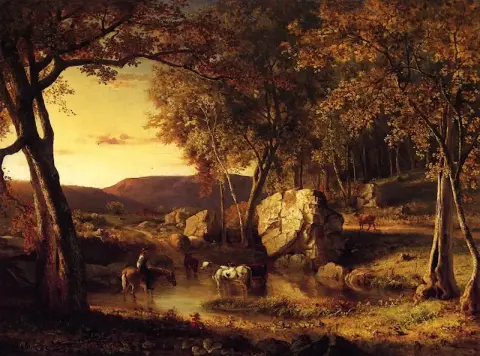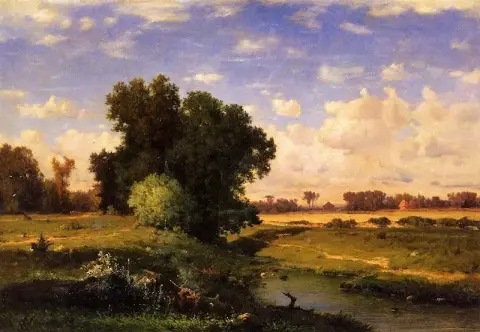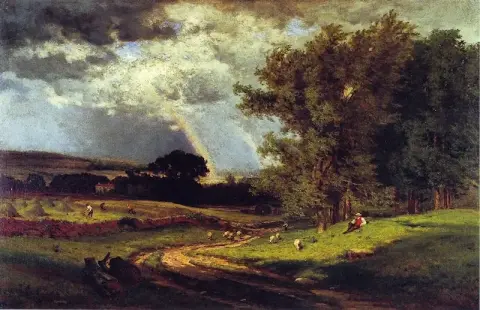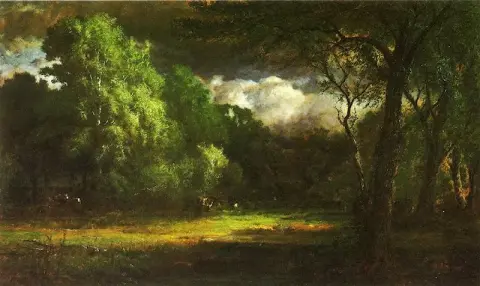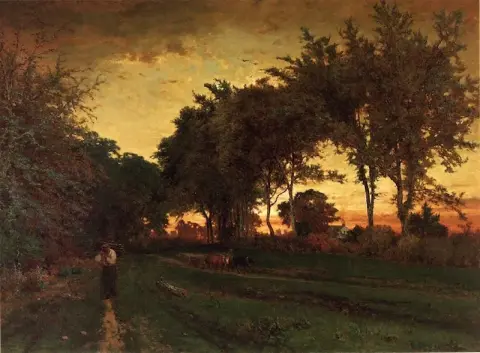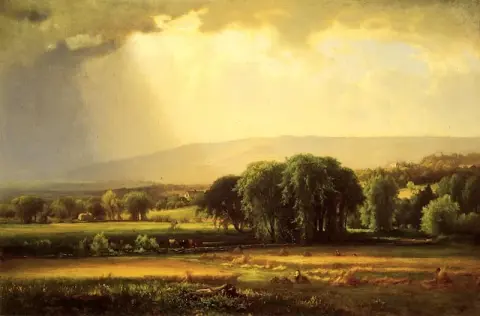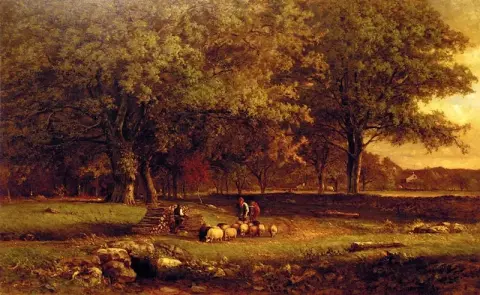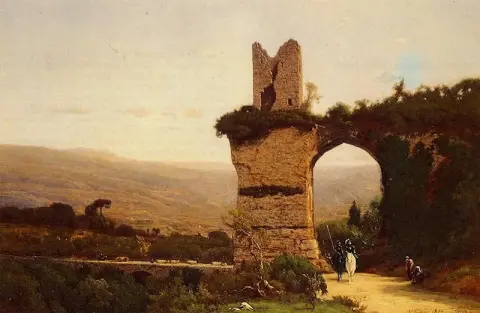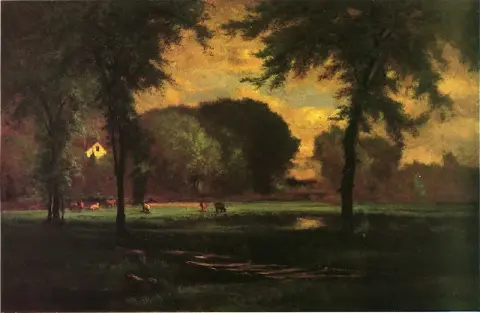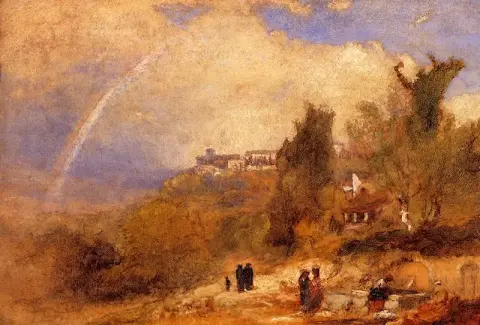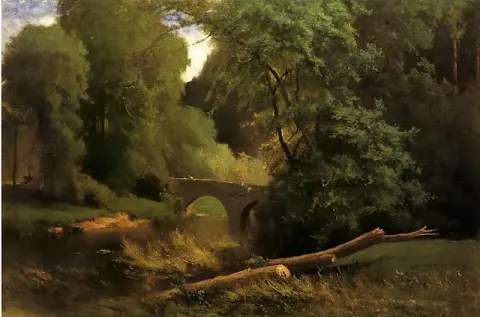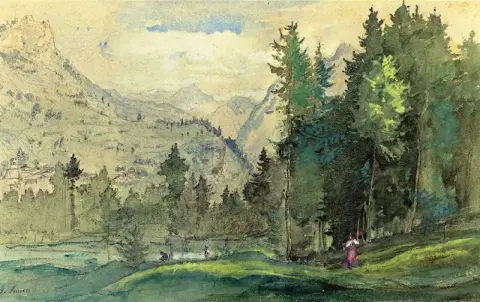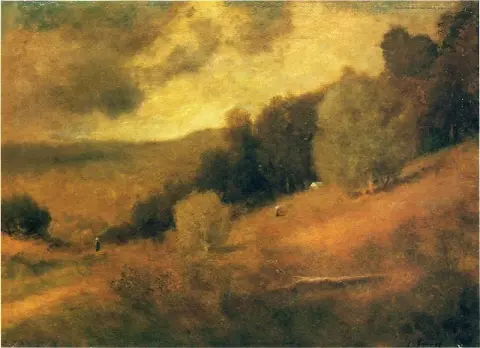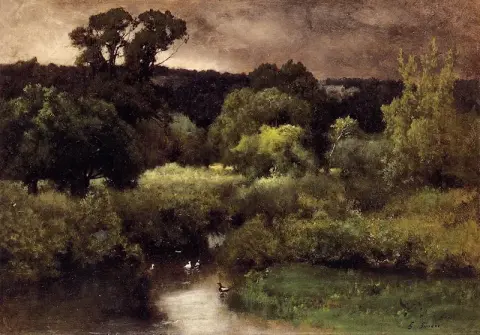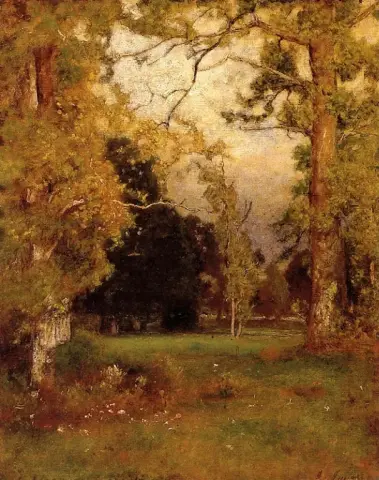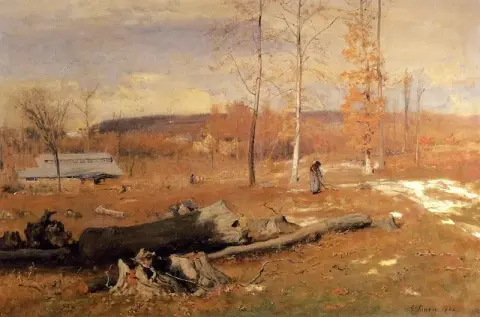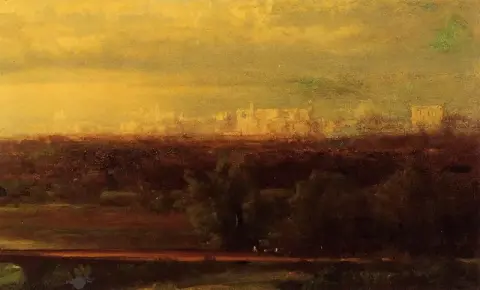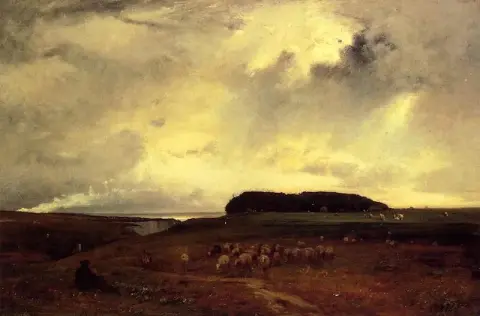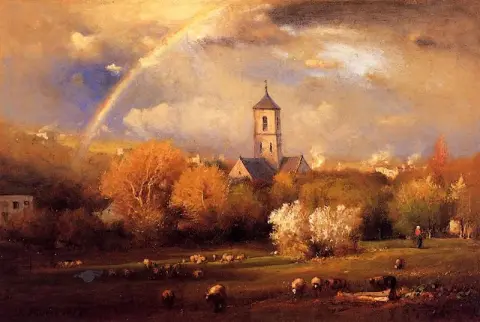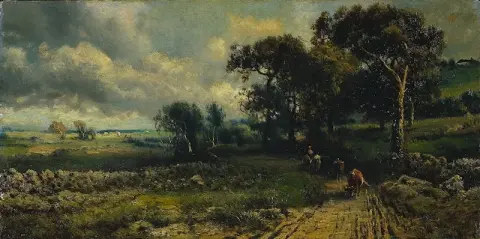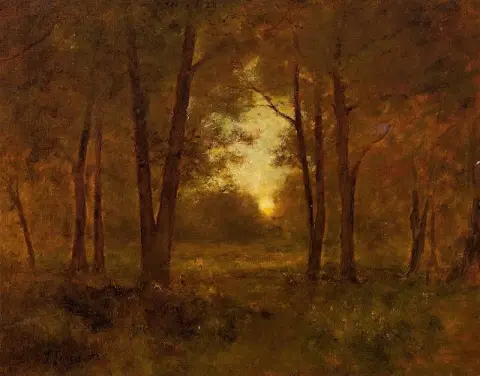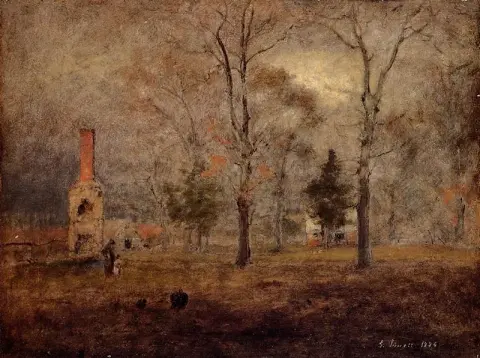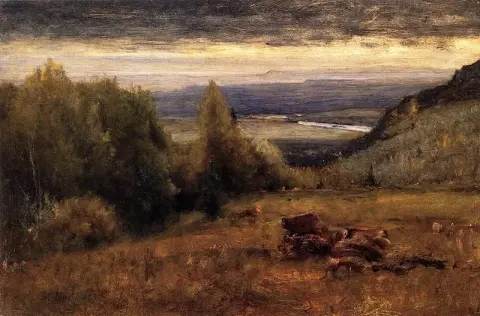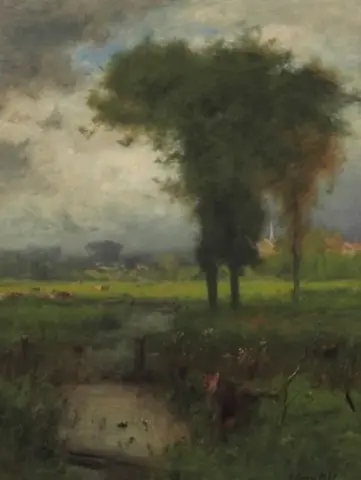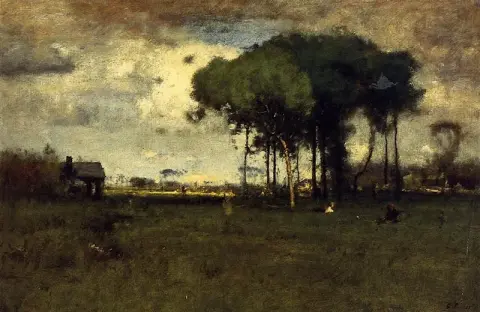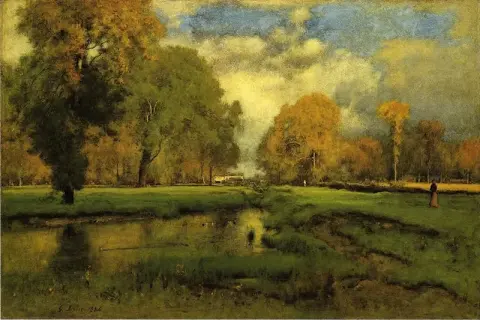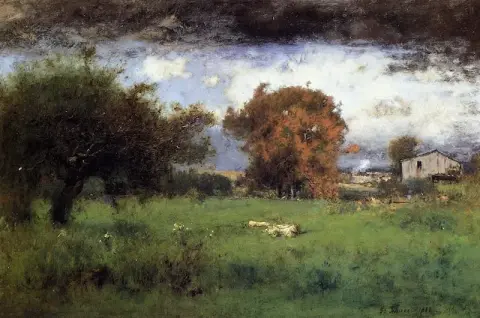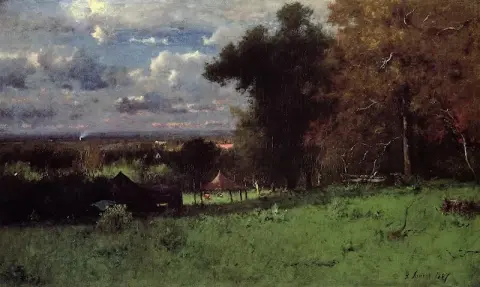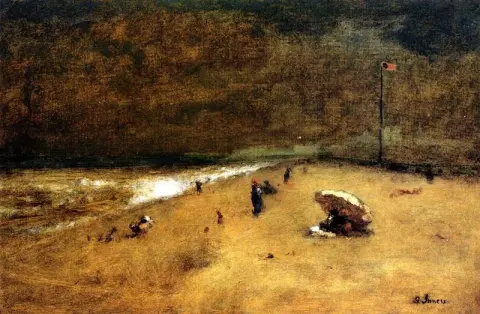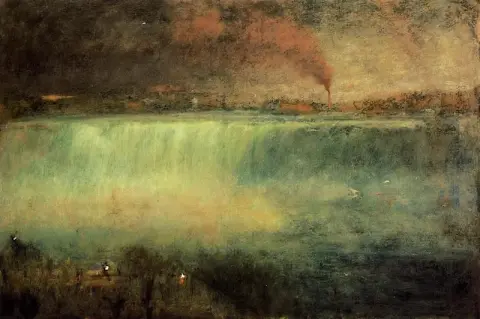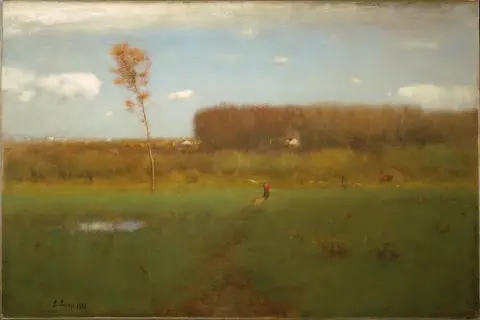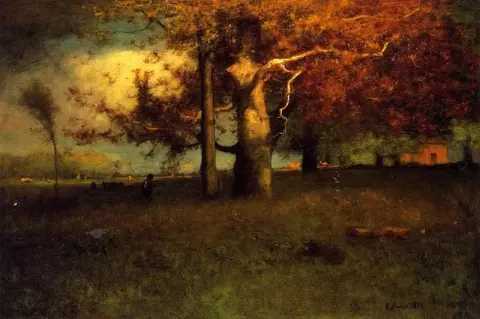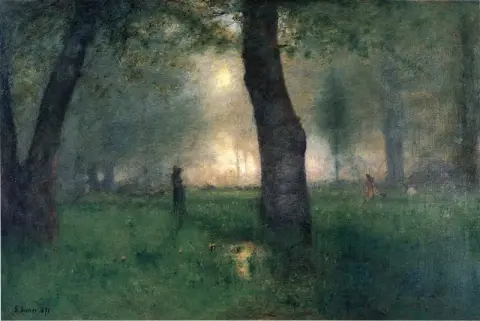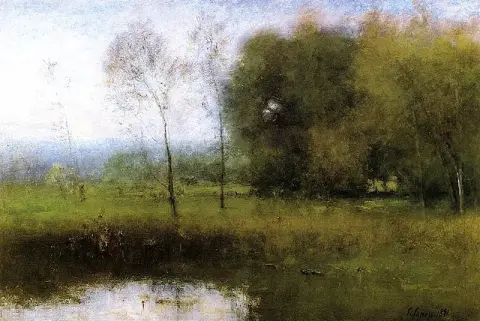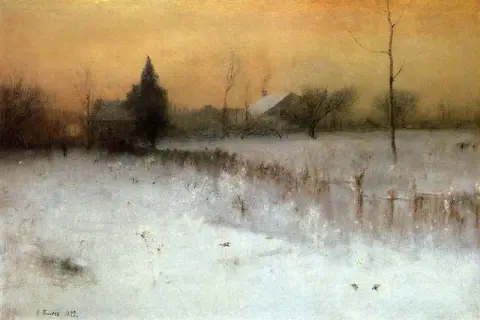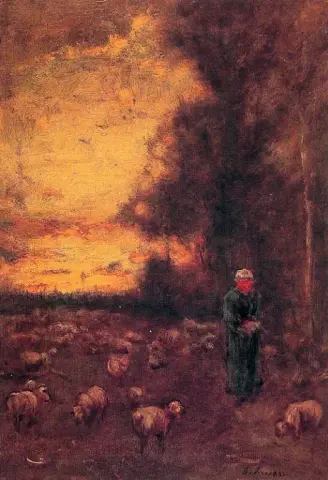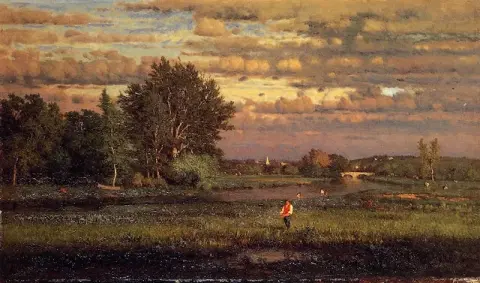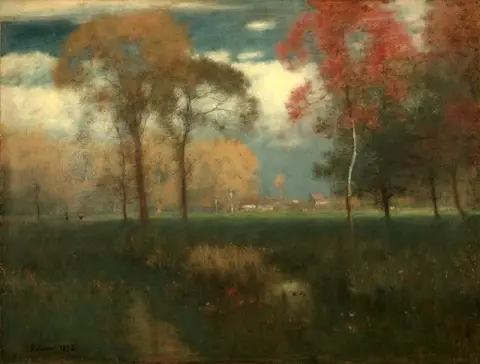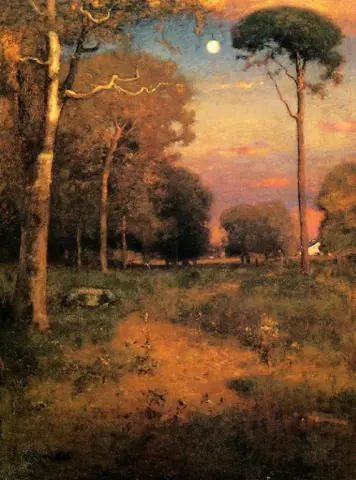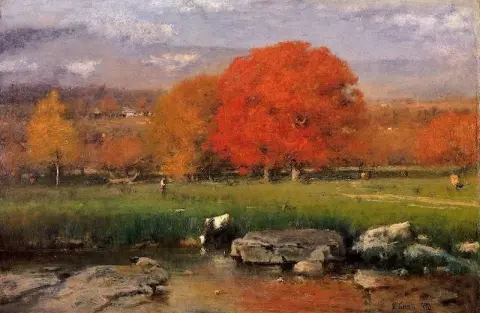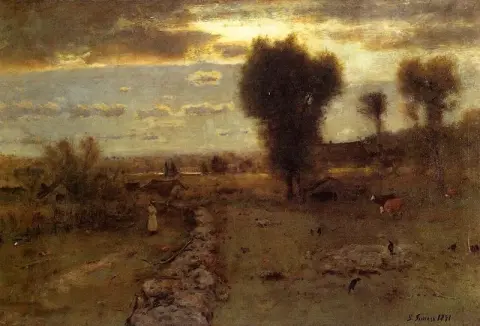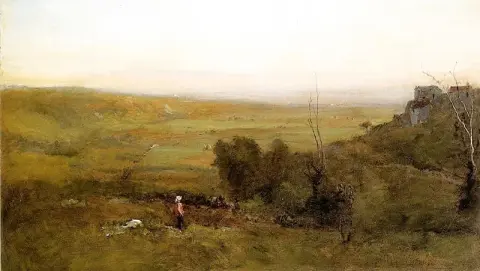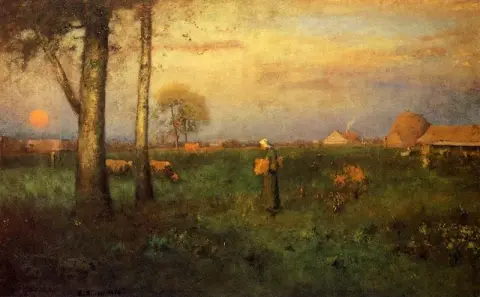

Hand painted reproductions of George Inness
George Inness: The Swedenborgian Visionary of American Landscape Painting
Early Life and Education
George Inness was born on May 1, 1825, in Newburgh, New York. Raised in a modest household, he showed an early interest in art and received initial training from a local artist before briefly studying under Régis François Gignoux, a French landscape painter. Though largely self-taught, Inness was deeply influenced by the Hudson River School, particularly the grandeur and romanticism of American landscapes.
However, Inness soon moved away from traditional Hudson River techniques to develop his own spiritual and emotional approach to painting—an evolution sparked in part by his exposure to the philosophical writings of Emanuel Swedenborg, which would guide his artistic vision for the rest of his life.
Artistic Style and Themes
George Inness is best known for his luminous, atmospheric landscapes that reflect both natural beauty and spiritual symbolism. His mature style marked a departure from detailed realism toward tonalism—a movement focused on soft, harmonious color palettes and emotional depth.
Inspired by Swedenborgian thought, Inness believed that the visible world was a reflection of a deeper spiritual reality. This belief is palpable in works like "The Lackawanna Valley" and "Peace and Plenty", where light, space, and mood suggest something more than just scenery—they evoke the divine presence in nature.
His use of light was especially symbolic, often representing the movement of the soul or the divine in daily life. Trees, skies, and open fields became vehicles for inner reflection and transcendence, rendered with painterly softness and meditative calm.
Career and Achievements
Over a prolific career spanning more than four decades, Inness achieved recognition as one of America’s greatest landscape painters. His works were exhibited widely in the United States and Europe, earning him both critical acclaim and commercial success.
By the 1870s, he had fully embraced a Swedenborgian spiritual philosophy, which transformed his canvases into visual sermons—not only portraying nature but interpreting it as a manifestation of divine order and presence.
He became a member of the National Academy of Design and won numerous honors, but his greatest achievement was in elevating American landscape painting to a more intimate, emotional, and spiritual art form.
Legacy and Influence
George Inness is regarded as the father of American Tonalism and one of the few artists to successfully merge landscape art with spiritual inquiry. His influence can be seen in the works of later tonalists and even early American modernists who sought mood, meaning, and metaphysical resonance in their compositions.
His vision remains relevant today for collectors and art lovers seeking work that transcends surface beauty. Inness’s landscapes are not just paintings—they are invitations to contemplate the connection between nature, soul, and the eternal.
Where to Find Handmade Oil Painting Reproductions of George Inness’s Art
For those interested in acquiring reproductions of George Inness’s artwork, Painting On Demand (POD) offers high-quality handmade oil paintings, capturing the spiritual depth, tonal beauty, and mystical atmosphere of his timeless landscapes.
Imagine owning an original work of art by George Inness, one of the greatest artists in history. At POD we offer you the opportunity to make this dream come true. We reproduce George Inness's works down to the smallest detail, so you can enjoy them in your own home.
Our reproductions are made by experienced artists who use the best materials and techniques. We are dedicated to providing you with the highest quality works of art, which will bring joy and inspiration to your family for generations.

